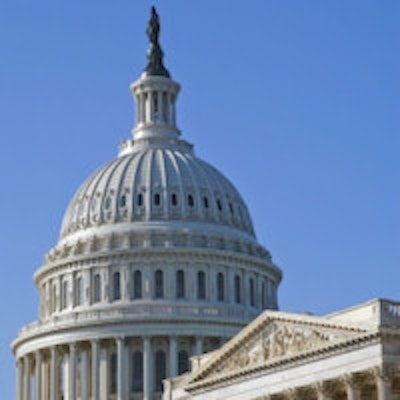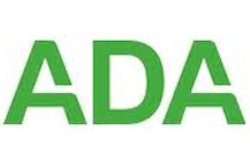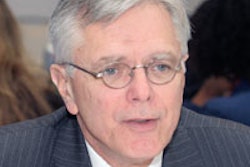
America is experiencing a dental crisis, and the nation's largest dental association has a plan to address it.
That is the message behind the ADA's new campaign, "Action for Dental Health: Dentists Making a Difference," launched today at a press conference in Washington, DC.
While a vast majority of middle and upper income Americans have access to dental services, the same is not true for millions of the poor and uninsured. Nearly half of lower income adults reported they have not seen a dentist in a year or more, according to the findings of a Harris Interactive poll released by the ADA in conjunction with the new campaign.
Poor Americans are more than two times as likely to be toothless than their wealthier counterparts, the poll also found.
"We've made great progress with each generation enjoying better dental health than the one before," ADA President Robert Faiella, DMD, MMSc, told DrBicuspid.com. "But there is still a dangerous divide in America between those with good dental health and those without. Our mission is to close that divide. Good oral health isn't a luxury -- it's essential."
Yet many currently go without even the most basic care, according to the ADA. Nearly one in five low-income adults said they or a household member had sought treatment for dental pain in an emergency room (ER), a rate far higher than that found among those with higher incomes, the Harris poll found. Only 6% of the poor who went to ERs for help with dental emergencies said their needs were met.
That finding echoed other recent studies that have taken a look at the number of poor and uninsured people resorting to ERs for dental needs. The Pew Center on the States estimated that in one recent year, preventable dental conditions were the primary diagnosis in 830,590 ER visits nationwide.
Paying it forward
The new ADA campaign outlines a range of initiatives intended to help address such problems. Some of the ideas are modeled after approaches already used in communities, Dr. Faiella said.
One initiative would divert patients with dental emergencies from hospital ERs to local dentists and clinics where their needs might be appropriately addressed, he explained.
He cited such a program now in place in Michigan, where dentists register with a local hospital to treat dental emergencies in their offices. Rather than paying for their care, patients donate their time to a local charity.
"I think that's an interesting way of paying it forward," Dr. Faiella said.
Other facets of the ADA campaign focus on the need to extend routine treatments and preventive care to poor and isolated people. It calls upon more private practice dentists to contract with federally qualified health centers (FQHCs), increase the charity care they offer at events such as Give Kids A Smile Day, and expand care to nursing home patents through a long-term care initiative to be implemented in 10 states.
The campaign also seeks to streamline Medicaid credentialing processes on a state-by-state basis. Most dentists do not currently participate in the program, according to the ADA. In addition, the Action for Dental Health campaign promotes preventive measures such as increased community water fluoridation and oral health literacy programs.
The new ADA campaign sets a goal of reducing by 35% the number of people visiting ERs for dental conditions and increasing by 175% the number of patients receiving care through FQHCs by 2020.
But even before its formal release, some questioned the campaign's ability to truly address dental disparities, particularly in poor communities and areas such as the thousands of federally designated dental health provider shortage areas.
With between 40 million and 50 million Americans living in such areas, it would take nearly 10,000 additional dental practitioners to meet current needs, according to calculations from the U.S. Department of Health and Human Services' Health Resources and Services Administration.
While some stakeholders see dental therapists as part of the solution, that model has been strongly opposed by the ADA. The dental organization instead favors a community dental health coordinator model, where individuals from the community are trained to work within the existing system to help patients locate dentists and negotiate barriers to care, such as finding transportation to appointments.
"We know that there is a capacity within our current system and our current workforce that can provide that care," Dr. Faiella said. "We are trying to find inroads into these communities and vulnerable populations to allow them access into our current system. We know the capacity is there."
'A missed opportunity'
But Dr. Faiella expressed frustration that the nation's healthcare reform law does not do more to address the lack of dental care for poor adults.
The Patient Protection and Affordable Care Act (ACA) requires that pediatric oral coverage be offered to anyone buying care under the health insurance exchanges being set up by states. In addition, millions of additional children will get coverage under expanded public programs.
In total, about 8.7 million children are expected to gain some form of dental benefit when enrollment gets underway later this year, according to research conducted by the ADA's Health Policy Resources Center (HPRC).
When asked if care would be available for the millions of new children entering the system either with Medicaid or private coverage made available to them through healthcare reform, Dr. Faiella responded: “We see challenges on the Medicaid front. One comes from funding on the state level and the other from administrative. What we find is if we make incremental changes in either one we see a dramatic increase in the number of dentists who participate in Medicaid.”
He said the ADA is working at the state and community level for improved Medicaid funding and administration.
“Hopefully it will make a difference because dentists are ready to provide the care,” Dr. Faiella said.
The newly enrolled children would represent a nearly 55% reduction in the number of children without dental benefits. The outlook is not as good for adults, because the ACA stopped short of addressing the need for adult oral coverage on the exchanges.
According to ADA's research, an estimated 5.3 million adults would gain oral health coverage under the ACA, almost all due to Medicaid expansion in states that offer significant adult dental benefits. The increase would represent only a 5% reduction in the number of adults without dental benefits, according to the ADA.
"The ACA is a missed opportunity," noted ADA HPRC Vice President Marko Vujicic. "This is especially true for adults who have experienced greater financial barriers to dental care in recent years."
The Dental Divide in America Study was conducted online April 24-29, 2013, in the U.S. by Harris Interactive on behalf of the ADA. The survey included 1,221 U.S. adults age 18 and older, of whom 310 had a household income of less than $30,000 and 911 had a household income of $30,000 or more.



















